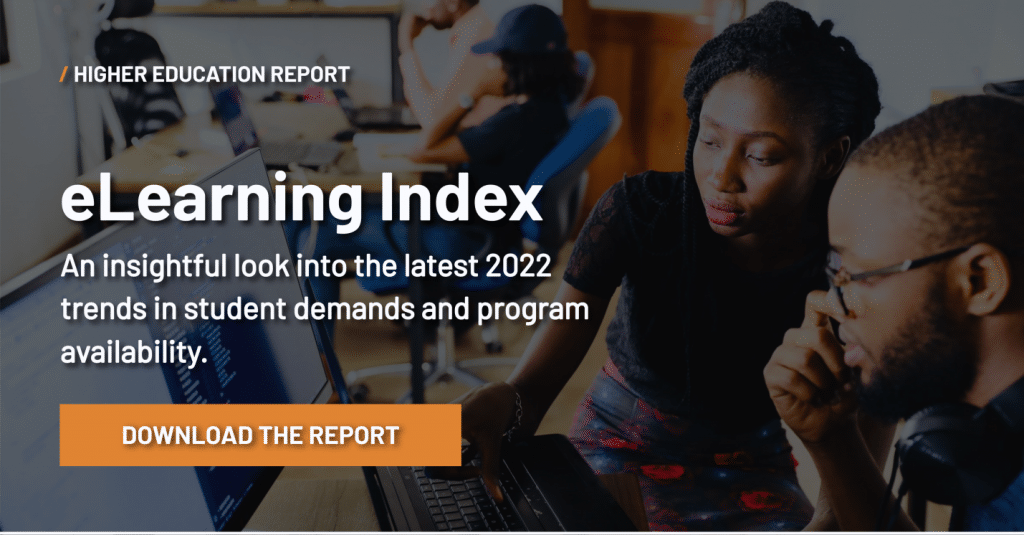eLearning Index of EducationDynamics 2022

Assessing the Student Demand for Degrees & Programs
Demand for certain degrees & certificate programs have changed drastically over the last several years. Today’s working and adult students demand flexible programs that are focused on areas of study leading to in-demand careers. Forward-looking colleges and universities are developing programs today for the careers of tomorrow. Our 2022 eLearning Index report highlights the staggering shifts in prospective student demand and the changing dynamics surrounding degree and program popularity.
How should higher education leaders reshape their program strategy to align with today’s in-demand careers, degrees, and certificate programs?
Our eLearning Index report provides a comprehensive profile of prospective student demand based on labor market trends and student behavior. We have analyzed over 3,000 degree and certificate programs offered by more than 300 accredited colleges and universities across the country and summarized the data to help schools answer this important question.
Projecting Growth Based on Supply and Demand
Our data analysts evaluated key indices to determine where program demand is likely to see growth and those fields where we identify relative lack of program options for these high growth fields of study. Using the Index, decisions can be made based upon hard data that profile student interest, demand, and education trends. When it comes to the postsecondary education market, understanding the supply and demand dynamics is a key resource to building more attractive career-ready programs for today’s non-traditional and adult students. After studying past enrollment trends, we settled on two key indicators of the potential for future growth: Student demand and Labor demand.
Student Demand Index provides an analysis of degree program completions for a given subject area and projected future growth based on enrollment data over the past five years.
Labor Demand Index evaluates the total number of jobs for a given occupation and the projected long-term growth based on the future BLS occupational projections.
Strong Candidates for Future Programs
We first analyzed the data nationally to identify broad trends in enrollments and labor demand. Across multiple degree levels, Analytics, Healthcare, Mental Health, Engineering and Education all showed the highest average five-year growth and completion.
While healthcare and STEM-related programs rose to the top on initial analysis, other opportunities abound. When expanding our national analysis to bachelor’s degree programs, communication, public relations, advertising, and digital arts were among the top programs in both degree completion and growth. Meanwhile, national trends at the master’s degree level revealed opportunities for growth in management, organizational leadership, and economics, along with healthcare and technology-related fields.
Trends Are not Universal
The latest trends indicate that prospective student interest is not universal across the board. To help higher education leaders better understand what these trends mean on their campus, we separated the data by degree level and sorted the data into regions aligned with the Bureau of Labor Statistics (BLS): West, Midwest, South and Northeast. The result is a comprehensive analysis of trending fields of study for every level of higher education, both nationally and regionally.

To compete and survive in today’s evolving higher education landscape, institutions need to align programs with labor market demands. At EducationDynamics, we are here to help institutions employ a data-driven approach to strategic enrollment growth.

Are you ready to accelerate your program enrollment and degree completion rate? Download our 2022 eLearning Index report today.